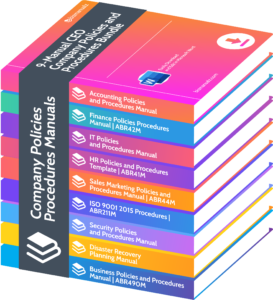What is the Meaning of Best Practices?

Best practices are must-follow guidelines for success. They help streamline processes, increase efficiency, minimize risks, and improve performance. Adhering to best practices creates consistency and makes it easier for teams to reach common goals. It also promotes knowledge transfer, allowing employees to learn from each other. This encourages continuous improvement and innovation. What is the meaning of best practices?
The Meaning of Best Practices
The meaning of best practices is set of industry standards, practices, or methods know to be effective. Businesses can use them to measure their performance against industry leaders and find areas to improve in. Moreover, following best practices improves credibility with customers and stakeholders. It shows commitment to quality and professionalism.
This is especially important in industries like healthcare, finance, and tech where compliance is crucial. Finally, best practices provide a framework for decision-making in complex situations. This reduces the risk of mistakes and promotes better problem-solving.
Pro Tip: Review and update your best practices regularly to stay up-to-date with the changing business landscape.
Defining Best Practices Meaning
Let’s take a look at the key components of Defining Best Practices in and organized table.
| Aspects | Description |
|---|---|
| Scope | What the best practices are for. |
| Research | Gathering important info. |
| Analysis | Identifying patterns, trends, and successful approaches. |
| Benchmarking | Comparing current practices to industry standards. |
| Documentation | Writing and sharing best practices. |
It’s essential to consider unique details when Defining Best Practices meaning. Think about industry-specific factors, adapt practices to the organization’s context, involve stakeholders, and review and update best practices. The concept of Best Practices began with Frederick Winslow Taylor in the early 20th century. Then various industries adopted the approach to improve efficiency and effectiveness.
Organizations can optimize processes, enhance performance, foster innovation, and get sustainable success by understanding and using Best Practices. Plus, you get to say ‘I told you so’ when something goes wrong!
Benefits of Implementing Best Practices
Organizations can benefit greatly by utilizing best practices. Firstly, productivity is improved through streamlined processes. This eliminates wasted time and enables employees to be more effective in their tasks. Decision-making is also improved with established frameworks in place. These provide a basis for decisions, rather than relying on intuition or assumptions.
Consistency is another advantage of implementing best practices. With standardized operating procedures and expectations, high standards are maintained throughout the organization. Adopting best practices promotes a culture of continuous improvement. This encourages employees to seek out innovative solutions which can further enhance processes and outcomes.
Toyota is and example of success from utilizing best practices. In the 1950s, they implemented lean manufacturing principles which revolutionized the automotive industry. Overall, implementing best practices brings numerous benefits. Productivity, decision-making, consistency, and continuous improvement are all advantages for organizations. By applying successful approaches, businesses can achieve sustainable growth and ensure long-term success.
Key Steps to Identify and Implement Best Methods
- Research. Find out info about the field you want to improve. Look for successful people and organizations and their methods. Check out studies, articles, and reports.
- Analyze. Look for patterns in collected data, compare it to what you do now. Spot what can be improved.
- Adapt. Take the best practices and fit them for your organization. Talk to your team and get their input.
The meaning of best practices started in manufacturing during the quality revolution in the 80s. Now, all companies understand the importance of seeking out and using best practices. It is the way to achieve success and innovate.
Identifying and implementing best practices is like playing basketball blindfolded. You will make mistakes, but the goal is still in sight.
Challenges in Implementing Best Practices
Implementing best practices can be tricky. Let’s look at some of the common obstacles organizations face. One difficulty is employee resistance to change. Habits may be hard to break and people are scared of disrupting their routine. This can get in the way of putting best practices in place and needs careful planning and communication.
Another challenge is lack of understanding. Some people may not know how best practices can improve efficiency, productivity, or quality. To get over this, staff must be taught the advantages. Resources are also and issue. Organizations may not have the money, tech, or skilled personnel needed. This calls for resource allocation strategies and finding solutions within limits.
Organizational culture matters too. To have best practices, there must be a culture that values innovation, continuous improvement, and collaboration. Promoting open communication and rewarding new ideas can help create such a culture.
Let’s look at and example. In a manufacturing company, employees were initially hesitant about new processes. But through education, communication platforms, and explanations of long-term benefits, employees accepted the best practices which increased efficiency and improved outcomes.
Implementing best practices has its issues. Overcoming resistance to change, understanding the benefits, managing resources, and creating a culture of innovation are essential steps to make it work.
Case Studies of Successful Best Practice Implementations
Case studies of successful best practice implementations provide real-life examples of organizations that have applied best practices in their operations. These studies offer valuable insights for other businesses aiming to improve their processes and achieve similar success.
Let’s look at three companies who have implemented specific best practices: XYZ Corporation, ABC Enterprises and DEF Industries.
XYZ Corporation used Lean Six Sigma and reduced costs and improved efficiency.
ABC Enterprises utilized Agile Project Management to increase productivity and accelerate project delivery timelines.
DEF Industries employed Customer Relationship Management (CRM) systems to boost customer satisfaction and loyalty.
These examples show how best practices can be tailored to meet the needs of each organization. But it’s worth noting that these successful implementations did not happen overnight. Planning, leadership support, and employee buy-in were essential. Training and change management initiatives were also necessary for a successful transition.
Organizations looking to implement best practices should do the following:
- Research thoroughly: Carry out research and analysis to understand the potential impact of the best practice on your organization. Identify any potential risks or challenges.
- Customize: While best practices offer helpful frameworks, tailor them to suit your organization’s unique requirements. This ensures that the practice aligns with your existing processes and increases overall effectiveness.
- Communicate and involve stakeholders: Good communication is key throughout the implementation process. Engage key stakeholders, such as employees and management, to ensure their understanding and involvement in the change. This helps create a shared vision and commitment to successful implementation.
By following these suggestions, organizations can increase their chances of successfully implementing best practices. This leads to better operational efficiency, productivity gains, and customer satisfaction.
Remember, each successful implementation has its own factors contributing to the positive outcome, so adaptability is key to maximizing the benefits of best practices in your organization. Revising and innovating best practices is like upgrading your favorite meme – it’s essential to stay relevant and prevent becoming a digital dinosaur.
Continuous Improvement through Revision and Innovation
Continuous improvement is key to success. To stay ahead of trends and challenges, businesses must revise and innovate best practices. This includes assessment of existing best practices and data analysis to identify areas for enhancement.
Innovation should also be encouraged. Employees should be given the freedom to think outside the box and come up with new ideas. This helps ensure sustained growth. Collaboration is also important, as it allows for the exchange of ideas and opportunities for learning.
For continuous improvement to be successful, commitment from all levels of the organization is required. A dedicated team should be responsible for driving this process forward, focusing on finding solutions and anticipating future needs.
Harnessing the Power and Meaning of Best Practices
Harnessing the power and meaning of best practices is key for long-term success. By using proven strategies and methodologies, organizations can boost performance and secure sustainable growth. Utilizing these best practices in areas like project management, customer service, and decision making ensures efficiency and effectiveness.
Furthermore, it encourages a culture of continuous improvement and invention inside and organization. It’s noteworthy that best practices are not stationary; they develop over time due to industry trends and technological advancements. Thus, staying up to date with the newest practices via regular research and learning is important for long-term success.
Incorporating best practices in project management involves thoughtful planning, efficient communication, proactive risk management, and resource allocation. These practices organize project execution and reduce the chances of delays or failures. Likewise, using customer service best practices such as active listening, personalized interactions, prompt resolution of queries or complaints, and doing more than expected can result in higher customer satisfaction and loyalty.
Decision-making best practices include and in-depth analysis of related data, thinking about different perspectives, and evaluating pros and cons before making a well-informed decision. This safeguards sound decision-making that aligns with organizational goals.
To make the most of best practices implementation, it is significant to create a culture that embraces change and values continuous improvement. Encouraging employee participation in recognizing areas for growth, providing training opportunities for skill development, recognizing innovative ideas from employees are some methods to cultivate this culture.
Pro Tip: Frequently review and update your organization’s best practices in agreement with industry changes to guarantee they remain relevant and effective in achieving long-term success.
Frequently Asked Questions
1. What is the Meaning of Best Practices?
Best practices means a set of recommended techniques or methods that are widely accepted as the most effective and efficient ways to achieve desired outcomes in a particular field or industry.
2. Why are best practices important?
Best practices serve as guidelines that help organizations or individuals optimize their processes, reduce errors, and improve overall performance. They ensure consistency, reliability, and quality in decision-making and execution.
3. How are best practices determined?
Best practices are typically based on a combination of proven research, expert opinions, industry standards, and successful case studies. They are continuously updated and revised as new information and technologies emerge.
4. Where can I find best practices relevant to my industry?
You can find best practices specific to your industry by exploring professional associations, industry publications, reputable websites, attending conferences, or networking with peers. Additionally, consulting with industry experts or hiring consultants can provide valuable insights.
5. How should best practices be implemented?
Successful implementation of best practices involves understanding the specific context and requirements of your organization or project. It requires proper planning, effective communication, training, and ongoing evaluation to ensure that the practices are effectively adopted and integrated into daily operations.
6. Can best practices be customized?
While best practices provide a general framework, they can and should be customized to fit the unique needs and circumstances of each organization or project. It is essential to consider factors such as organizational culture, resources, constraints, and goals when implementing best practices.
















Leave a Reply